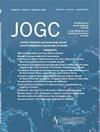临床共识声明第 458 号:妊娠期丙型肝炎病毒
IF 2
Q2 OBSTETRICS & GYNECOLOGY
引用次数: 0
摘要
目的为妊娠期丙型肝炎病毒常规产前筛查提供指导,支持最佳实践,优化产前和传染病护理。目标人群在加拿大接受产前护理并同意进行常规传染病筛查的孕妇/孕妇。选择包括回顾先前的血清学,避免重复检测,或提供有关识别丙型肝炎病毒感染对母亲/父母和婴儿的益处的信息。益处、危害和成本益处可能包括确定有资格接受丙型肝炎病毒感染治疗的人,避免可能在分娩和分娩期间增加向婴儿传播风险的干预措施,为适当筛查新生儿创造机会,并根据世界卫生组织的建议减轻丙型肝炎病毒感染的负担。鉴于使用产前筛查中已包括的血液样本进行丙型肝炎检测的可能性,目前没有直接危害。心理困扰可能发生与新诊断的丙型肝炎病毒在怀孕。确定无症状病例并进行相应治疗的费用超过了这种额外检测的医疗保健费用。证据:2017年至2023年7月期间,已发表和未发表的文献进行了回顾(先前的丙型肝炎指南:第96号:丙型肝炎感染妇女的生殖保健,最后一次得到批准)。我们检索了OVID Medline、Embase、PubMed和Cochrane Library数据库,以查找本声明每个部分的相关英文出版物。通过访问与健康相关的机构、临床实践指南集以及国家和国际医学专业学会(即美国妇产科学院、皇家妇产科学院、澳大利亚和新西兰皇家妇产科学院)的网站,确定未发表的文献、方案和国际指南。验证方法由主要作者获得并审查证据,并由SOGC传染病委员会(2022)审查建议。作者采用共识程序确定了这些建议,并根据加拿大预防保健工作队制定的指南(https://canadiantaskforce.ca/methods/;目标受众提供产前保健的卫生保健从业人员、卫生保健组织、省和联邦政府。摘要建议对妊娠期丙型肝炎进行全面筛查。摘要STATEMENTS1。在每一次怀孕中进行丙型肝炎病毒筛查是重要的(中等)。存在丙型肝炎病毒的治疗方案,妊娠诊断应导致分娩后转诊治疗(中度)。丙型肝炎垂直传播发生在新生儿、妇女和妊娠期丙型肝炎患者所生的婴儿中,这些婴儿需要随访(中度)。应在每次怀孕的前三个月进行抗体检测形式的丙型肝炎病毒筛查。如果孕妇/怀孕个体有丙型肝炎病毒感染史(治疗或未治疗),如果存在持续的再感染风险或以前没有进行病毒载量检测以确定活动性疾病的存在,则应要求进行丙型肝炎病毒载量检测。不应重复进行丙型肝炎病毒抗体检测,因为结果仍为阳性。(强,温和)。2。通过产前筛查或根据先前血清学检查被诊断为丙型肝炎病毒的人应了解妊娠后的治疗方案,并与现有的治疗提供者联系起来。目前不建议在怀孕和哺乳期间治疗(强烈,中度)。丙型肝炎病毒的病程预计不会因怀孕而恶化,在整个妊娠期间不需要进行肝功能常规检查。然而,在分娩后转诊治疗前,应安排基线肝功能检查和组织纤维化评估(强,高)。虽然确切的传播机制尚不清楚,但不建议使用混合胎儿和母体血液的产时程序,如胎儿头皮电极和胎儿血液取样。丙型肝炎患者无剖宫产或其他常规产时护理改变的指征(强,高)。丙型肝炎病毒感染者无母乳/胸部喂养禁忌症。建议避免在乳头破裂或出血的情况下喂奶(强、高)。新生儿的检测应推迟到两个月大(强、中度)。 出院前,应审查丙型肝炎病毒的治疗计划,并开始适当的转诊(强,高)。本文章由计算机程序翻译,如有差异,请以英文原文为准。
Clinical Consensus Statement No. 458: Hepatitis C Virus in Pregnancy
Objective
Provide guidance for routine antenatal screening of hepatitis C virus in pregnancy to support best practice and optimize antenatal and infectious disease care.
Target Population
Pregnant women/pregnant individuals receiving antenatal care in Canada and consenting to routine infectious disease screening. Options include reviewing prior serology and avoiding repeat testing or providing information regarding the benefit of identifying hepatitis C virus infection for the mother/parent and the baby.
Benefits, Harms, and Costs
Benefits may include identifying those eligible for treatment of hepatitis C virus infection, avoiding interventions that may increase the risk of transmission to the baby during labour and delivery, creating opportunities for appropriate screening of newborns, and reducing the burden of hepatitis C virus infection in line with World Health Organization recommendations. No direct harms are present given the possibility of testing for hepatitis C using the blood samples already included in antenatal screening. Psychological distress may occur with a new diagnosis of hepatitis C virus in pregnancy. The costs of identifying asymptomatic cases, with resulting treatment, outweigh the health care costs of this additional test.
Evidence
Published and unpublished literature was reviewed between 2017 and July 2023 (when the prior hepatitis C guideline: No. 96 The Reproductive care of Women Living with Hepatitis C infection, was last endorsed). OVID Medline, Embase, PubMed, and the Cochrane Library databases were searched for relevant publications available in English for each section of this statement. Unpublished literature, protocols, and international guidelines were identified by accessing the websites of health-related agencies, clinical practice guideline collections, and national and international medical specialty societies (i.e., American College of Obstetricians and Gynecologists, Royal College of Obstetricians and Gynaecologists, and Royal Australian and New Zealand College of Obstetricians and Gynaecologists).
Validation Methods
The evidence was obtained and reviewed by the principal authors with recommendations reviewed by the Infectious Disease Committee of the SOGC (2022). The authors identified these recommendations using a consensus process and rated the quality of evidence and strength of recommendations according to the guidelines developed by the Canadian Task Force on Preventative Health Care (https://canadiantaskforce.ca/methods/; see online Appendix A).
Intended Audience
Health care practitioners providing antenatal care, health care organizations, and provincial and federal governments.
Social Media Abstract
Universal screening for hepatitis C in pregnancy is recommended.
SUMMARY STATEMENTS
- 1.Screening for hepatitis C virus in every pregnancy is important (moderate).
- 2.Treatment options for hepatitis C virus exist, and diagnosis in pregnancy should result in referral for treatment following delivery (moderate).
- 3.Vertical transmission of hepatitis C occurs to newborns and those born to women and persons with hepatitis C in pregnancy, and these infants require follow-up (moderate).
RECOMMENDATIONS
- 1.Hepatitis C virus screening in the form of antibody testing should be performed in the first trimester of every pregnancy. If a pregnant woman/pregnant individual has a history of hepatitis C virus infection (treated or untreated), a hepatitis C viral load test should be requested if there is ongoing risk of reinfection or a viral load had not previously been performed to determine the presence of active disease. Repeat hepatitis C virus antibody testing should not be performed, as the result will remain positive. (strong, moderate).
- 2.Persons diagnosed with hepatitis C virus through antenatal screening or based on review of prior serology should be made aware of treatment options following pregnancy and linked with available treatment providers. Treatment is not currently recommended during pregnancy and breastfeeding (strong, moderate).
- 3.The course of Hepatitis C virus is not expected to worsen due to pregnancy and routine testing of liver function throughout the pregnancy is not required. However, baseline liver function tests should be ordered and an assessment of fibrosis organized prior to referral for treatment following delivery (strong, high).
- 4.Although the exact mechanisms of transmission are not known, intrapartum procedures that involve mixing of fetal and maternal blood such as fetal scalp electrodes and fetal blood sampling are not recommended. There is no indication for cesarean delivery or other changes to routine intrapartum care in patients with hepatitis C (strong, high).
- 5.There is no contraindication to breast/chest-feeding in patients with hepatitis C virus. Avoidance of feeding in the setting of cracked or bleeding nipples should be advised (strong, high).
- 6.Testing of neonates should be deferred until two months of age (strong, moderate).
- 7.Prior to discharge from hospital, plans for treatment of hepatitis C virus should be reviewed and appropriate referrals initiated (strong, high).
求助全文
通过发布文献求助,成功后即可免费获取论文全文。
去求助
来源期刊

Journal of obstetrics and gynaecology Canada
OBSTETRICS & GYNECOLOGY-
CiteScore
3.30
自引率
5.60%
发文量
302
审稿时长
32 days
期刊介绍:
Journal of Obstetrics and Gynaecology Canada (JOGC) is Canada"s peer-reviewed journal of obstetrics, gynaecology, and women"s health. Each monthly issue contains original research articles, reviews, case reports, commentaries, and editorials on all aspects of reproductive health. JOGC is the original publication source of evidence-based clinical guidelines, committee opinions, and policy statements that derive from standing or ad hoc committees of the Society of Obstetricians and Gynaecologists of Canada. JOGC is included in the National Library of Medicine"s MEDLINE database, and abstracts from JOGC are accessible on PubMed.
 求助内容:
求助内容: 应助结果提醒方式:
应助结果提醒方式:


